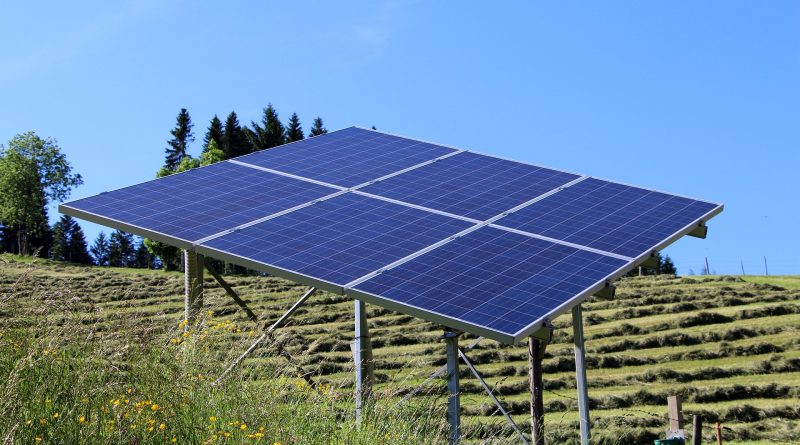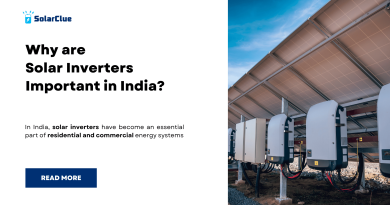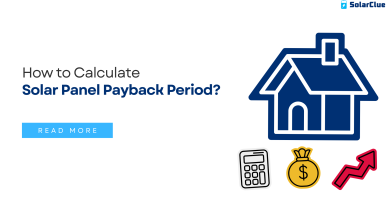How Does Solar Work: Unveiling the Process
Solar power is rapidly gaining popularity as a clean and renewable source of energy. With its ability to produce electricity without pollution or greenhouse gas emissions, solar energy is a sustainable solution to our growing energy needs. But have you ever wondered how solar power actually works? In this blog, we will delve into the fascinating workings of solar technology and explore the science behind it.
Table of Contents
The Basics of Solar Power
Solar power harnesses the energy radiated by the sun and converts it into usable electricity. At the heart of this process are photovoltaic (PV) cells, which are composed of semiconducting materials, usually silicon. When sunlight strikes these cells, it creates a reaction that generates an electric current. This electricity can then be used to power homes, businesses, and even entire cities.
The Functioning of PV Cells
PV cells consist of two layers of silicon—an n-type and a p-type—placed together to form a junction. The n-type silicon has an abundance of electrons, while the p-type has an abundance of positively charged “holes” where electrons are missing. When sunlight hits the PV cell, its energy excites and frees electrons from the atoms in the n-type layer, allowing them to move freely.
The electric field created by the junction between the two types of silicon directs these free electrons towards the p-type layer. As a result, an electric current is generated, which can be harnessed as electricity. Wires connected to the PV cells collect this current and feed it into an inverter.
The Role of the Inverter
While PV cells produce direct current (DC) electricity, most of our household appliances and electrical systems require alternating current (AC). This is where the inverter comes into play. The inverter takes the DC electricity from the PV cells and converts it into AC electricity. This allows solar-generated power to seamlessly integrate with the electrical grid or be directly consumed by a building.
An inverter also plays a crucial role in maximizing the system’s efficiency. It optimizes power output by tracking the maximum power point (MPP) of the solar array, ensuring that it is operating at its highest possible efficiency at any given moment.
Solar Panels and Arrays
PV cells are often assembled into solar panels, which are the building blocks of solar arrays. Solar panels are typically made up of multiple PV cells interconnected within a single module. They can range in size, from small panels for personal use to larger arrays designed for industrial applications.
The size and orientation of solar panels within an array are strategically planned to maximize energy production. Factors such as the angle at which the panels are tilted and their alignment with the sun’s path determine the amount of sunlight they receive. By optimizing the positioning of solar panels, the system can generate the most electricity possible.
The Role of Solar Inverters
As mentioned earlier, solar inverters are essential in converting DC electricity into AC electricity. However, they do much more than that. Modern solar inverters come equipped with a myriad of features to enhance system performance, safety, and monitoring.
One critical aspect of an inverter is its ability to ensure grid compatibility. Grid-tied solar systems allow excess electricity to be fed back into the utility grid, compensating the grid for the power generated. In such setups, inverters must synchronize with the grid’s frequency and voltage levels to safely transfer power. Additionally, inverters must comply with relevant safety standards to prevent any damage to the grid or electrical appliances.
Another crucial feature of solar inverters is data monitoring. Inverters collect and provide real-time data on system performance, energy production, and the overall health of the solar array. This enables homeowners, businesses, and solar installers to identify any issues promptly and optimize the system’s performance.
Solar Energy Storage
One limitation of solar power is its intermittency. Solar panels produce electricity only when exposed to sunlight, resulting in fluctuations in energy production. To address this issue, solar energy storage systems have gained prominence.
Batteries, such as lithium-ion or lead-acid batteries, can store excess energy generated during the day for use during periods of low or no sunlight. Solar panels charge these batteries throughout the day, and the stored energy can be drawn upon when needed, providing a reliable power source even during cloudy days or at night. Energy storage systems thus ensure continuous power supply and increase the flexibility of solar energy usage.
Conclusion
Unveil the fascinating process of solar energy with SolarClue® as your guide. Simplifying the technical aspects, we explain how solar panels convert sunlight into electricity in 2024. Discover the components of a solar power system, including panels, inverters, and batteries. Let SolarClue® assist you in choosing the right solar panels and understanding the roles of inverters and batteries for optimal energy utilization. We address common concerns about solar energy storage and educate on the importance of net metering. Explore the environmental benefits of solar power and gain insights into the efficiency and maintenance considerations of solar panels. Join our community for shared experiences and collaborative learning in your solar journey.
Frequently Asked Questions
SolarClue® simplifies the technical aspects, explaining the basic principle of how solar panels work and assisting users in understanding the process of converting sunlight into electricity in 2024.
SolarClue® provides insights into the components of a solar power system, breaking down the roles of solar panels, inverters, and batteries in the overall process of generating and storing solar energy in 2024.
SolarClue® guides users in selecting the right type of solar panels for their needs, considering factors like efficiency, technology, and available space for installations in 2024.
SolarClue® assists users in understanding the role of inverters in converting DC power from solar panels into AC power for household or commercial use, ensuring optimal energy utilization in 2024.
SolarClue® explains the function of batteries in a solar power system, detailing how they store excess energy generated during sunny periods for use during cloudy days or at night in 2024.
SolarClue® addresses misconceptions about solar energy storage, providing accurate information about the capabilities and limitations of batteries used in solar systems in 2024.
SolarClue® educates users on the importance of net metering, detailing how it enables them to sell excess solar power back to the grid, potentially offsetting electricity costs in 2024.
SolarClue® provides information on the environmental benefits of solar energy, explaining how it reduces reliance on fossil fuels, lowers carbon emissions, and contributes to a greener and sustainable future in 2024.
SolarClue® guides users in understanding the efficiency and maintenance considerations of solar panels, helping them make informed decisions to optimize the performance and longevity of their installations in 2024.
SolarClue® fosters a community where users share their experiences with solar power systems, creating a platform for knowledge exchange and collaborative learning in 2024.



